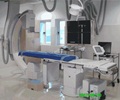People from lower socioeconomic backgrounds who suffer a heart attack come to the emergency department more often, are less likely to be treated aggressively.
People from lower socioeconomic backgrounds who suffer a heart attack come to the emergency department more often, are less likely to be treated aggressively. They have higher mortality rates a year after the attack, says new University of Alberta research that has important implications for access to cardiac care.
Dr. Padma Kaul and a group of U of A researchers investigated 5622 patients in Alberta who went to a hospital emergency department with a first heart attack. Following the common practice of using the neighbourhood median household income as a proxy for socioeconomic status, the researchers classified patients into separate income groups. Patients in the lowest income quartile were more likely to be older, female and to have other illnesses such as diabetes and peripheral vascular diseases. Researchers first looked at who was more likely to have an angioplasty or coronary bypass surgery and then did a one-year follow-up after the emergency department visit to see whether the patient was still alive. The study is published in the January 2007 issue of the prestigious American Journal of Medicine.“We found a clear discrepancy when it comes to socioeconomic status,” said Kaul. “We may have equal access health-care coverage in Canada but the bottom line is that people may not be getting equal treatment.”
The research team, made up of Wei-Ching Chang, Cynthia Westerhout, Michelle Graham and Paul Armstrong, all from the U of A’s Faculty of Medicine and Dentistry, found that in patients belonging to the lowest versus the highest socioeconomic status quartile, the risk of going to the emergency department was 72 per cent higher. Rates of invasive procedures were lower for the poor (36 per cent vs 48 per cent) and death was higher at one year (19.1 per cent vs. 9.1 per cent). But for those patients who did have cardiac procedures, the playing field is leveled, said Kaul.
“It is not much of a surprise that richer patients do much better than poorer ones,” said Kaul. “In some socioeconomic conditions, poorer patients may be living alone and less likely to adhere to treatment plans. Perhaps there are behavioural characteristics that also put them at risk. What we did find is that poorer people are less likely to have invasive procedures to treat the heart and in turn, the ones who don’t have those procedures tend to do worse. It’s a vicious cycle.”
Our research also shows that patients from poorer neighbourhoods use the emergency department more—they often use it as their first stop for regular care, rather than a family doctor. “This obviously has implications for the health-care system” she said. “This study helps us identify the patient population that is most at risk and that we need to focus on.”
Source-Newswise
SRM











